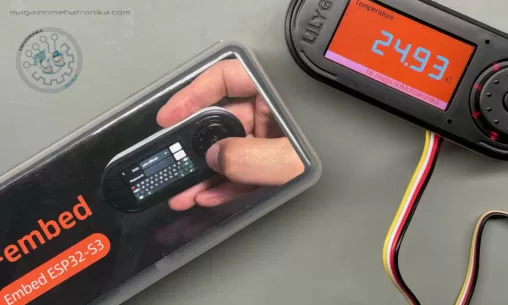Lilygo

The LilyGO T-HMI has landed before us, packed in a tidy semi-transparent plastic box, surrounded by black cushioning foam. This tiny dev board is based around an ESP32-S3R8 MCU and a 2.8” resistive TFT touchscreen with a 240 x 320 resolution. The set also includes a small plastic stylus (very similar to the one used on some older Nintendo handheld consoles) and a pair of cables: one for connecting a 5V battery and one for connecting a Grove sensor (Grove is the name of Seeed Studio’s plug-and-play system of sensors and peripherals).
Before continuing, we’d like to thank the manufacturer for providing us with a review unit.

An intriguing platform for development based on the ESP32S3-based Wroom-1 module, equipped with a color TFT LCD, WiFi and BLE 5, a Grove port, a mic, a speaker, an SD slot, and a rotary encoder…
Creating a functional device of your own isn’t exactly easy if you start with a blank piece of paper. Development systems are tools that make it easier to try out an idea, but they can hardly be stuffed into a functional product. With its devices, LilyGO tries to guide users one step closer to the finished product, but not without some sacrifices in the form of a vastly reduced GPIO. TEmbed is a unified system consisting of an ST7789 1.9′′ 320-by-170 TFT color LCD, a rotary encoder, an array of 7 RGB APA102 diodes, a microphone, a speaker, one Grove connector for external sensors, an SD card slot, and a battery connector. The backbone of the T-Embed is the Espressif ESP32S3 SoC, with 16 MB of Flash and 8 MB of PSRAM memory. The Wroom-1 module it’s situated in also provides WiFi 802.11 b/g/n and BLE 5 support.



